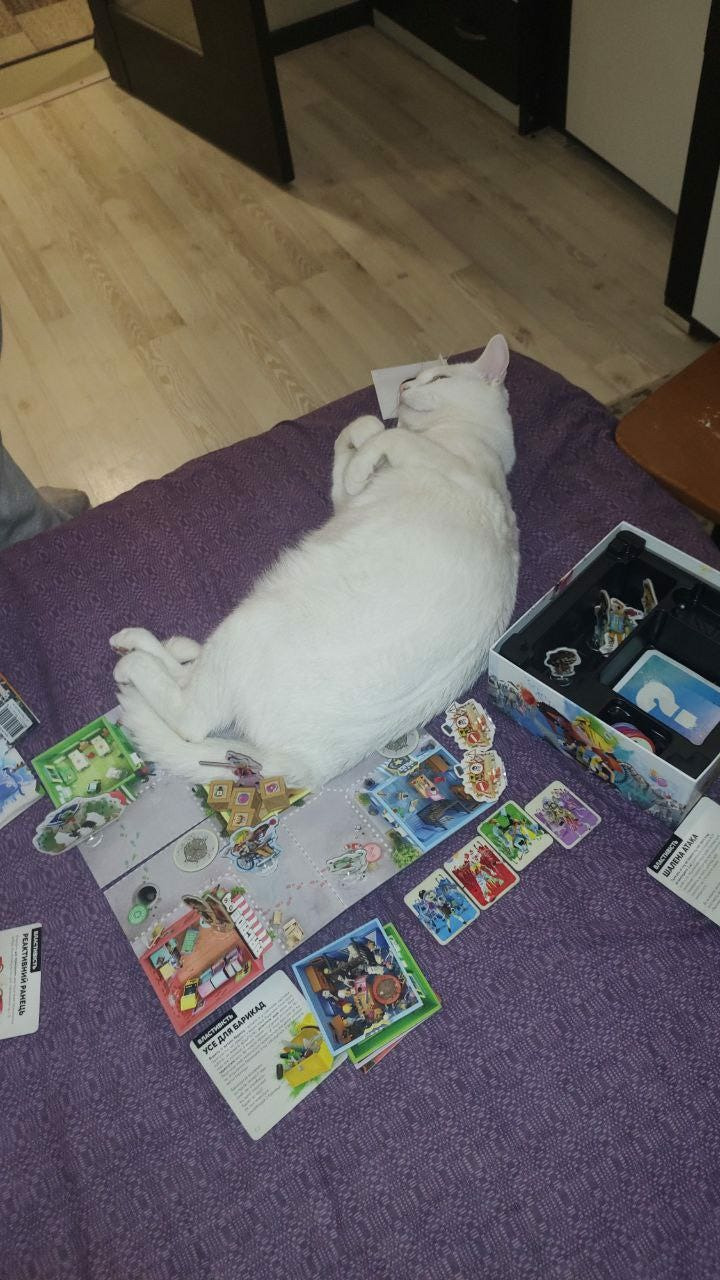Editor’s Note:
The war isn’t over. It isn’t close to over.
And while it goes on, we don’t just write about the headlines: we take you beyond the daily news cycle with deeper coverage of the people living through this conflict.
Support the kind of journalism you won’t find anywhere else. Upgrade your subscription today!

“Even in 100 years, some parts of Ukraine could remain uninhabitable,” said environmentalist Oleksii Vasyliuk.
While Ukraine dreams about the end of combat, another battle is unfolding beneath our feet – for the land that has fallen victim to war.
Bombs, shells, destroyed factories, and fuel depots – all of this has turned huge areas of Ukrainian soil into a toxic trap.
As Ukraine prepares for a potential ceasefire and considers its future reconstruction, it faces a poorly-noticed but deeply dangerous crisis: toxic land. The years of mass shelling has led to severe and widespread contamination, largely by dangerous heavy metals like mercury and lead.
This is not just Ukraine’s problem but a warning to the world. Two world wars left Europe with poisoned soils that took decades to cleanse. France still has ‘red zones’ where toxic levels remain deadly 106 years after 1918. Ukraine risks facing a similar reality. In such turbulent times, when new conflicts can erupt, the Ukrainian experience may be key for other countries to understand how to restore areas ravaged by modern total war.
Oleksii, an environmentalist whose main mission is protecting the wild, is particularly concerned about which parts of Ukraine will be safely inhabitable after the war ends.
He was one of the founders of the Ukrainian Nature Conservation Group (UNCG), which creates protected areas, improves Ukrainian legislation, and identifies cases of illegal destruction of nature.
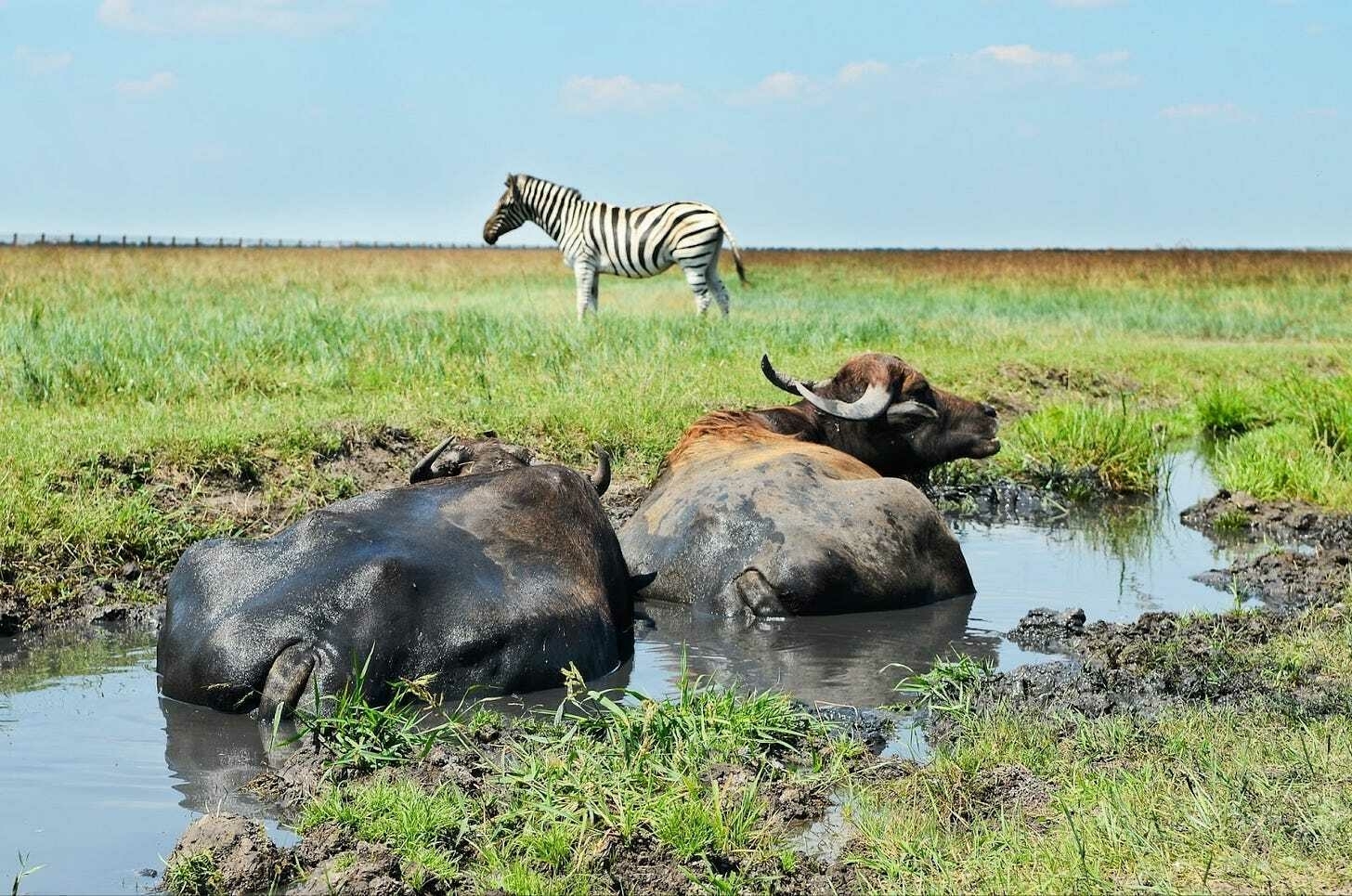
Oleksii has a special connection with the now-Russian-occupied Askania-Nova, a huge ‘biosphere reserve’ that cares for rare and exotic animal species in Ukraine’s southern Kherson region.
Right after Russia occupied part of Kherson in 2022, Oleksii rushed to save Askania-Nova. He raised funds and contacted workers from other abandoned jobs, organizing deliveries of food and essential supplies to the reserve.
For the past three years, he has been professionally collecting data about the reserve’s animal losses since the Russian invasion started.
“As it turned out, we can work remotely,” Oleksii said. “We can allow satellite monitoring of how nature is changing under the conditions they [Russians] have created.”
Experts have been monitoring what has been happening to Ukrainian soil too.
For decades, the Askania-Nova park had been free of fires, but during the war, large parts of it were affected by fighting, leaving only fragments untouched by flames.
Across Ukraine, land that once thrived is now tainted by the pollution brought on by war. The destruction caused by war goes beyond visible ruins.
“I think the question will be how contaminated the soil is,” said Oleksii. “What's the point of reconstructing if you can't live there?"
France was left with similar issues after WWI. Large areas were so contaminated and destroyed from fighting that the government banned their use.
Although those territories, called ‘zone rouge,’ have been returned to nature and improved, they still exist. Access to these areas is still prohibited, as demining and decontamination work is still ongoing in France. In addition, it is likely that “full rehabilitation of the land” at the current pace will take 300 to 700 years.
“I am sure that we can have such plots too,” said Oleksii. “It is impossible to guess how large these plots will be to say whether all cities will be rebuilt on the same places.”
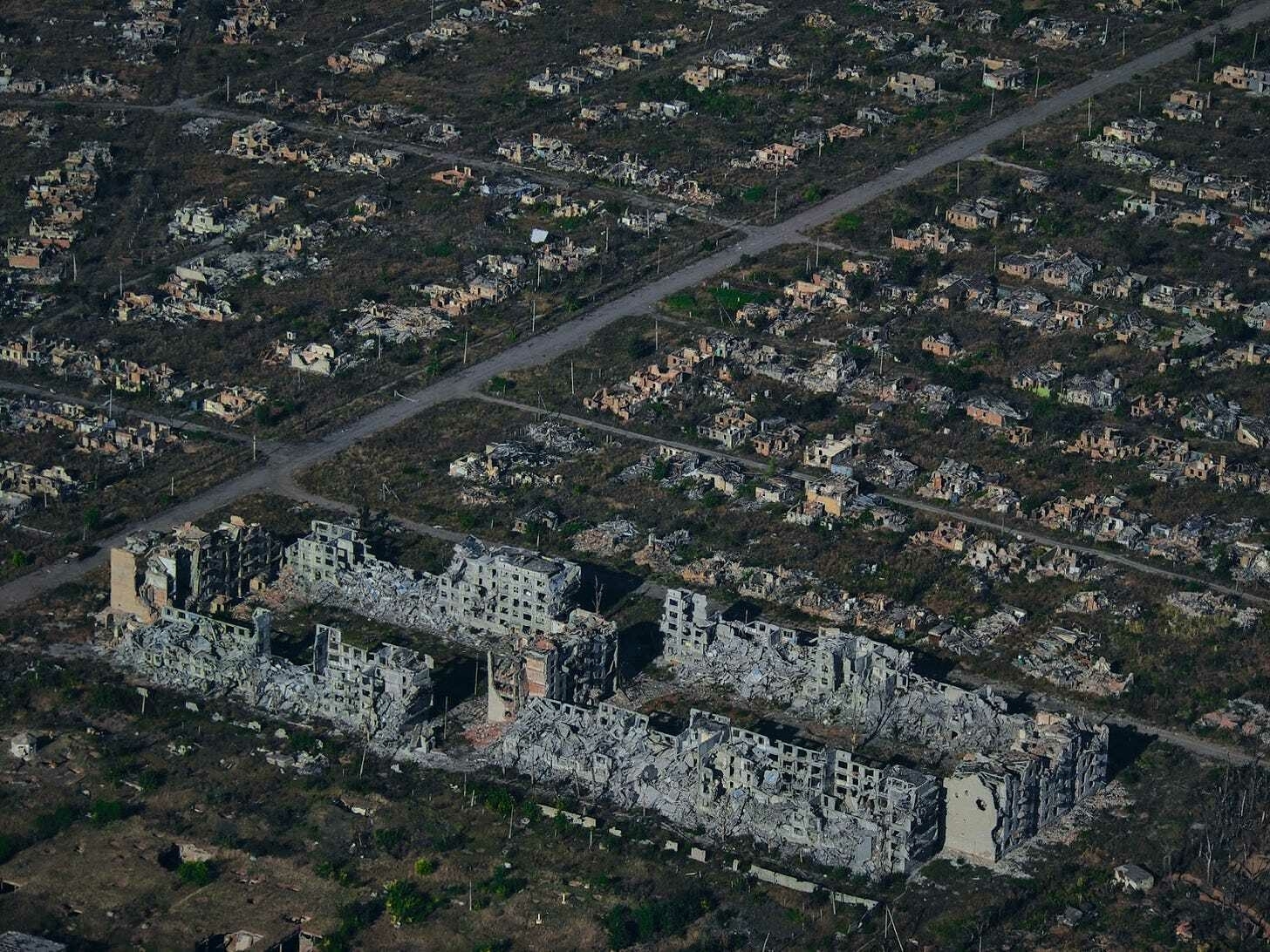
Ukraine’s fertile black soils, known as Chernozem, is one of the richest soils in the world. The high content of organic matter has made it fundamental for food security globally. However, it has suffered significantly after 2022.
The war damages soil in four ways.
The first is mechanical pollution, which occurs when the fertile top layer of soil is destroyed or mixed with other layers. This can happen due to digging trenches or the movement of military equipment, and mean the soil loses its fertility.
Demining – which will be the first step of the reconstruction across much of Ukraine – further disrupts the land, mixing deep, less fertile layers with surface soil and burying essential organic materials.
“When we clear landmines, the process is like a giant mixer,” explained Iryna Komarova, a Ukrainian biologist and ecologist.
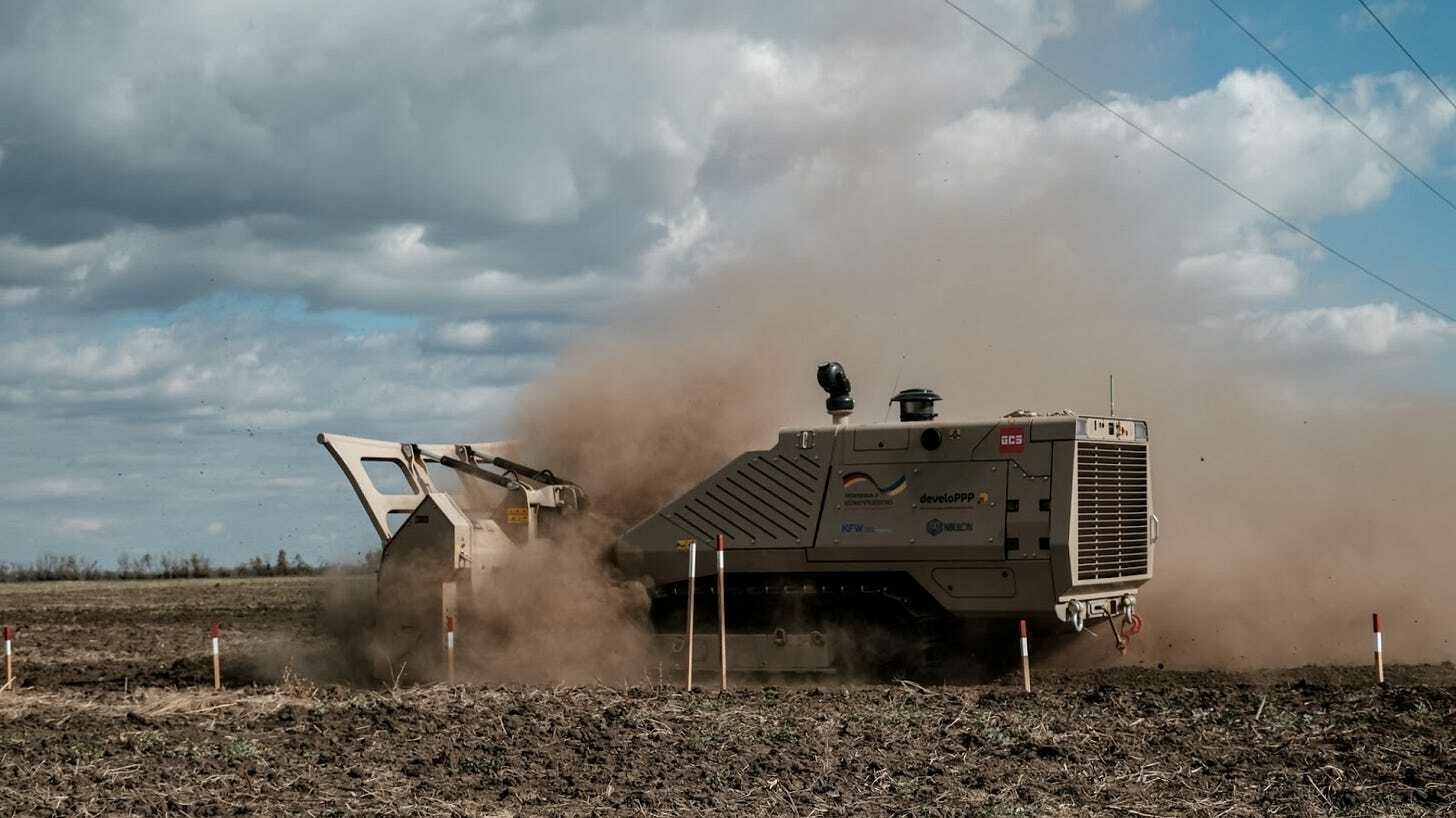
Next comes physical pollution, caused by explosions and fires. After that, soil properties and structure change – becoming compacted, mixed, less fertile, and less able to retain water.
The third type of soil damage is chemical contamination, caused by fuel spills, explosives and destroyed factories. Currently, more than 20 percent of Ukraine is contaminated by explosive ordnance. Experts have found mercury, arsenic, lead, and other substances in regions where active combat last took place in 2022. They pose high risks to human health – mercury damages the nervous system, arsenic causes cancer and organ failure, and lead impairs brain development and cardiovascular health.
The final type of soil contamination is biological damage – when the tiny organisms that usually keep soil healthy and fertile die. Earthworms, insects, fungi, and even small invertebrates that maintain soil health are lost, causing long-term disruptions in soil fertility.
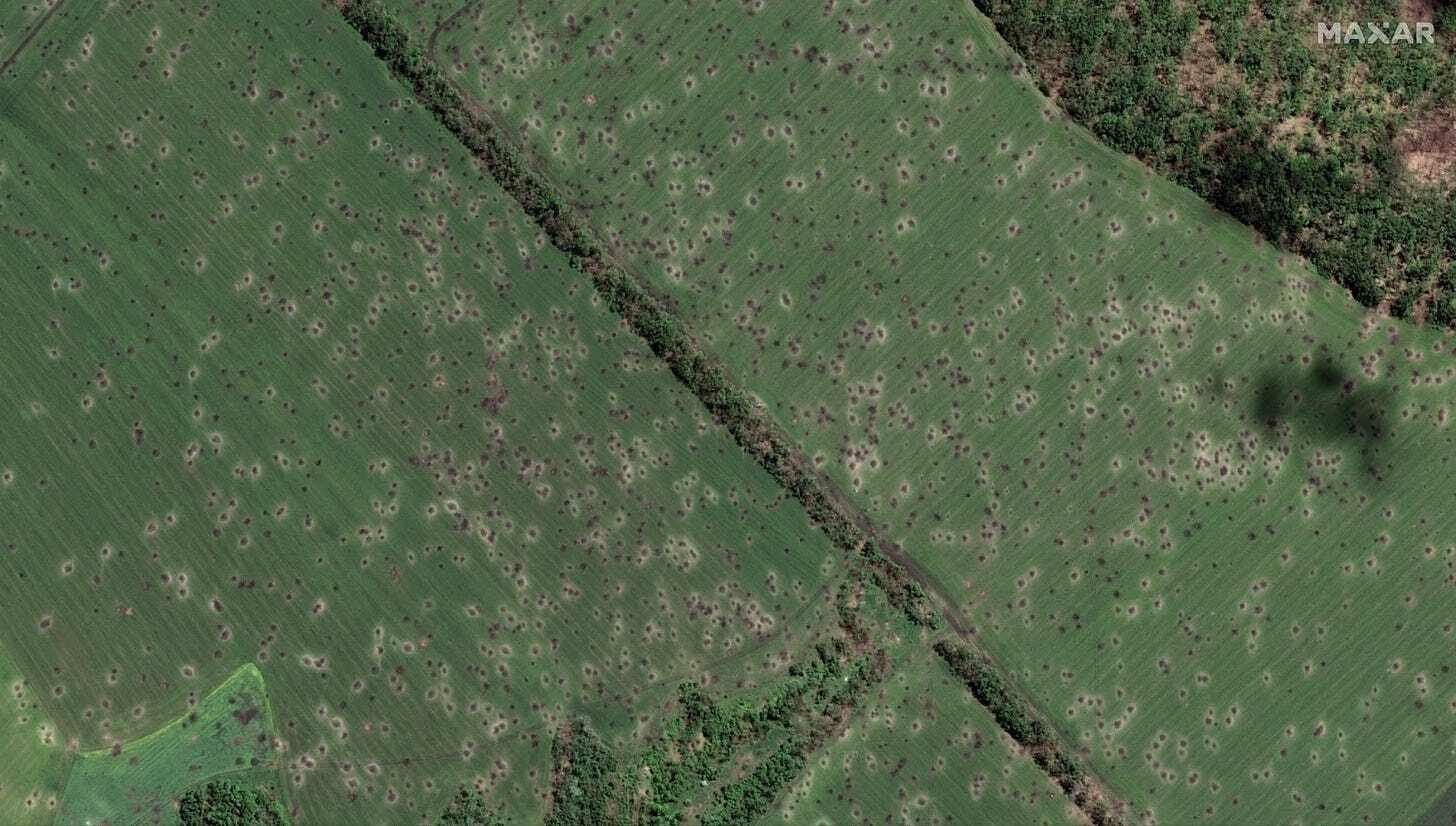
However, there is a ray of hope even if the soil is severely damaged.
As an example, post-WWII Dresden and Warsaw – two cities that were damaged the most, in Germany and Poland – did get fully reconstructed.
For the most part, it was the residents of these cities that voluntarily began to rebuild the buildings destroyed by the enemy armies.
While Warsaw’s planners integrated green spaces, Dresden’s botanic gardens had boys search for seedlings in the ruins of the city. Some of those trees still exist, but many of the city’s parks languished because they were planted over empty cellars that couldn’t hold water.
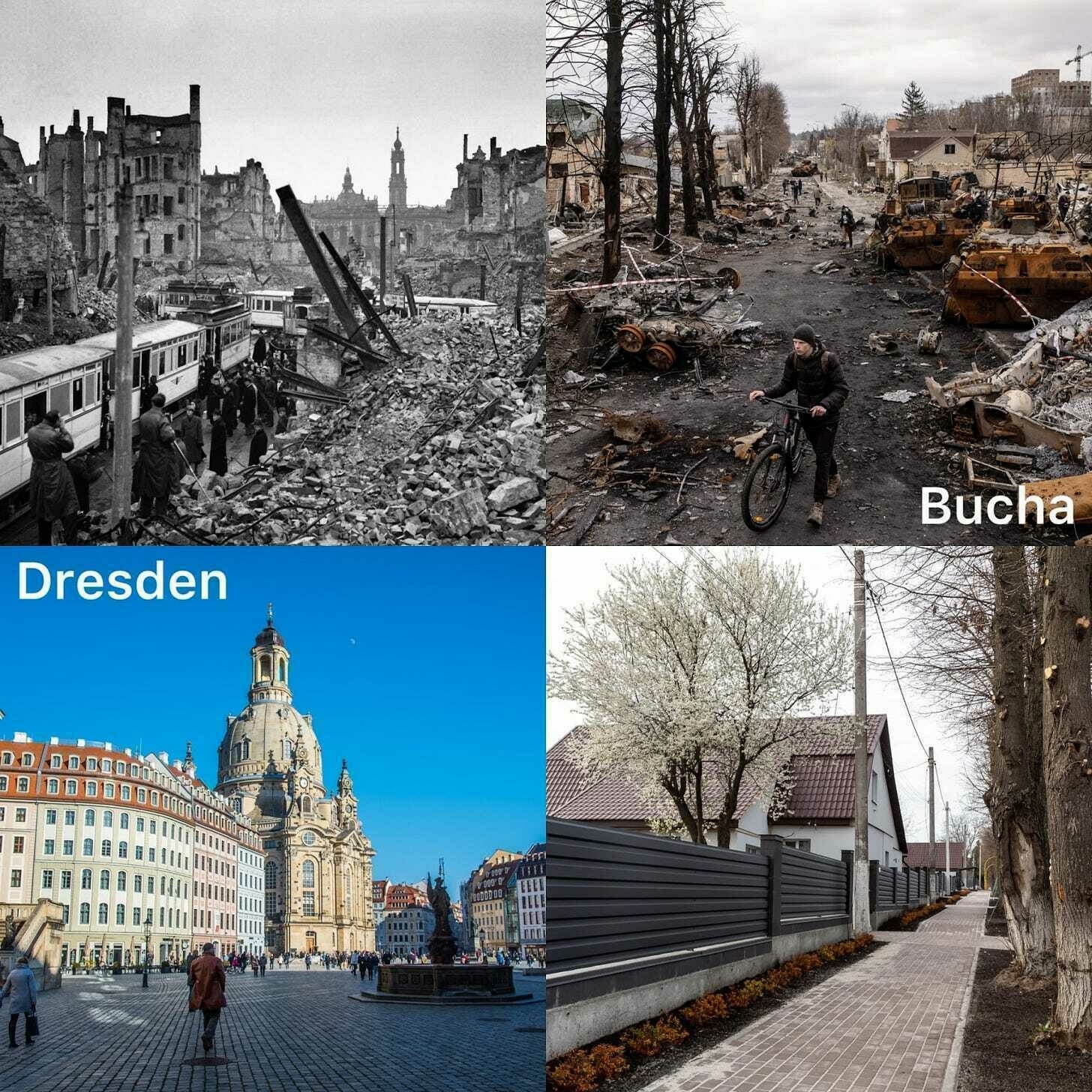
So can Ukrainian cities.
According to Ukrainian engineers The Counteroffensive talked to, there are no unsurpassable technical obstacles to rebuilding, even in the most heavily bombed areas.
"There is no such thing as 'unbuildable' soil. What matters is cost – how much effort and money are required to stabilize the ground and make it safe for construction," explained Yurii Melashenko, a Ukrainian geotechnical engineer and Head of the Department of the State Research Institute of Building Сonstructions.
There are also other experiences that will help Ukraine clean its soil.
In peacetime, industrial lands that had been damaged after activities like mining were rehabilitated through environmental initiatives, with experts designing strategies to ‘heal’ land after source extraction. Now, these methods can be adapted for war-damaged regions.
One of the main techniques is removing harmful pollutants using plants and microorganisms that help soil regenerate. For example, one successful restoration method Komarova talked about involved planting shrubs that attract birds and other wildlife, which plays a key role in enhancing the ecosystem and accelerating its recovery.
In areas damaged by war, Komarova emphasized the importance of planting trees – for both biodiversity and stabilizing the land – to prevent landslides and soil problems.
But nature alone cannot do it all.
Ukraine will one day be able to rebuild even on poisoned land, laying new foundations on the ruins.
The scars may heal, but they will still bleed for a long time.
In this time of great uncertainty — and unstable American support — it means that the situation on the ground is very dangerous. Your contributions help us get the body armor, medical gear, and supplies we need to stay safe.
Show your support by contributing to our tip jar - funds go towards keeping us safe and ensuring our work continues.
NEWS OF THE DAY:
UKRAINE, US MAY SIGN A MINERALS DEAL NEXT WEEK: The U.S. has already finalized the document and handed it over to its Ukrainian partner, Treasury Secretary Scott Bessent tells Fox News.
Earlier this week, Zelenskiy confirmed that the US has proposed a “large” minerals deal based on the previous framework agreement, but did not provide specifics.
They were partially disclosed by Member of Parliament of Ukraine Yaroslav Zheleznyak. The new deal involves all minerals throughout Ukraine. The joint fund will be managed by five people, three of them from the United States, with veto power. The U.S. contribution is the assistance provided from 2022. At the same time, there is no mention of security guarantees. The agreement is valid indefinitely. Yaroslav Zheleznyak said.
NATO CLARIFIES FATE OF 4 US SOLDIERS IN LITHUANIA: “The search is ongoing”, NATO said and apologized for the words of the NATO Secretary General Mark Rutte, who said that 4 military men are dead, reports The Associated Press.
The day before, it became known that the ‘Hercules’ armored vehicle was found submerged in a reservoir, in which four American soldiers were traveling during the exercise, was found submerged in a body of water. But no soldiers were found in the vehicle. Search operations are still ongoing.
N KOREA SENT ANOTHER 3K SOLDIERS TO RUSSIA: Additional troops will be sent in early 2025, reports the CCN.
This was reported by the South Korean military. These 3,000 Koreans will reinforce the 11,000 troops that North Korea sent earlier. Earlier South Korea’s Joint Chiefs of Staff reported that 4.000 Korean soldiers had already been killed or wounded on the battlefield.
According to South Korea, North Korea also sent a “significant number” of short-range ballistic missiles, about 220 units of 170-millimeter self-propelled howitzers and 240-millimeter multiple launch rocket systems.
CAT OF CONFLICT
Today, the cat of conflict is Kokos (Coconut), who likes to interfere playing board games, that Artem can go work on his next article for The Counteroffensive.
Stay safe out there.
Best,
Artem

